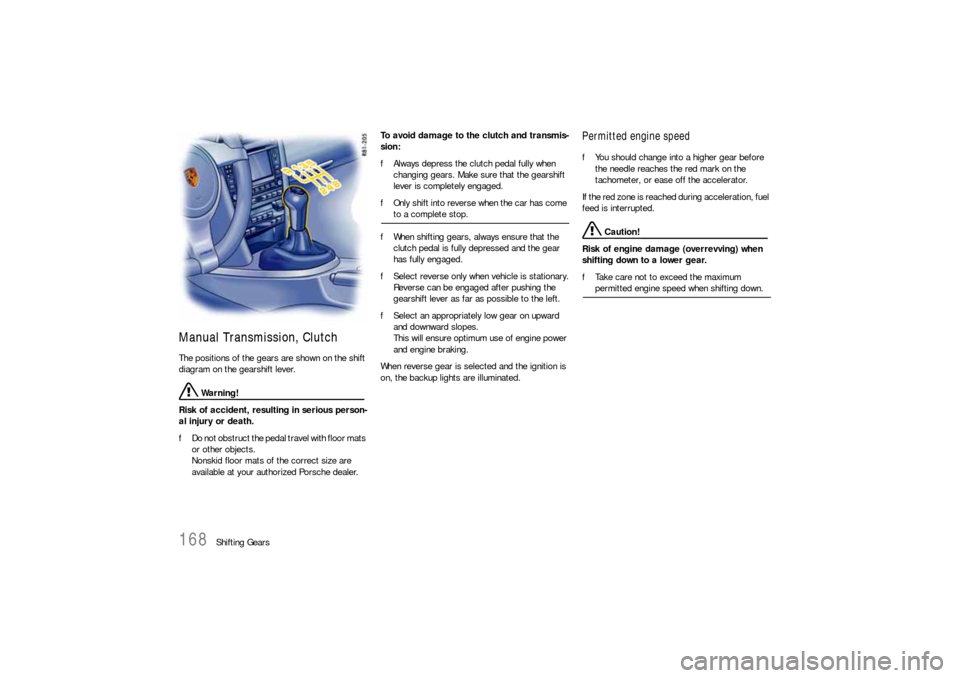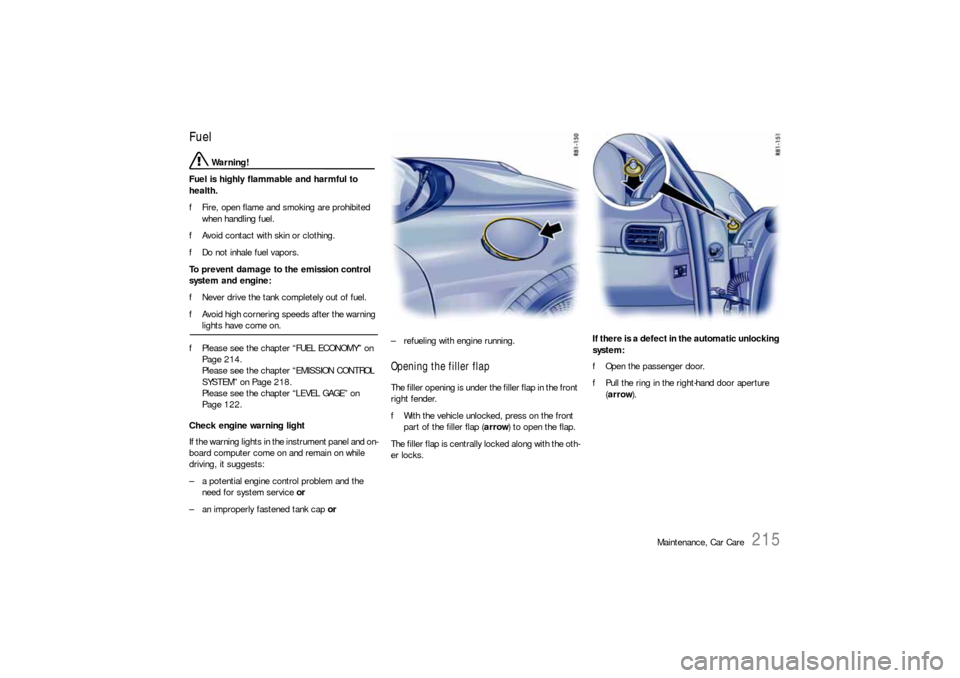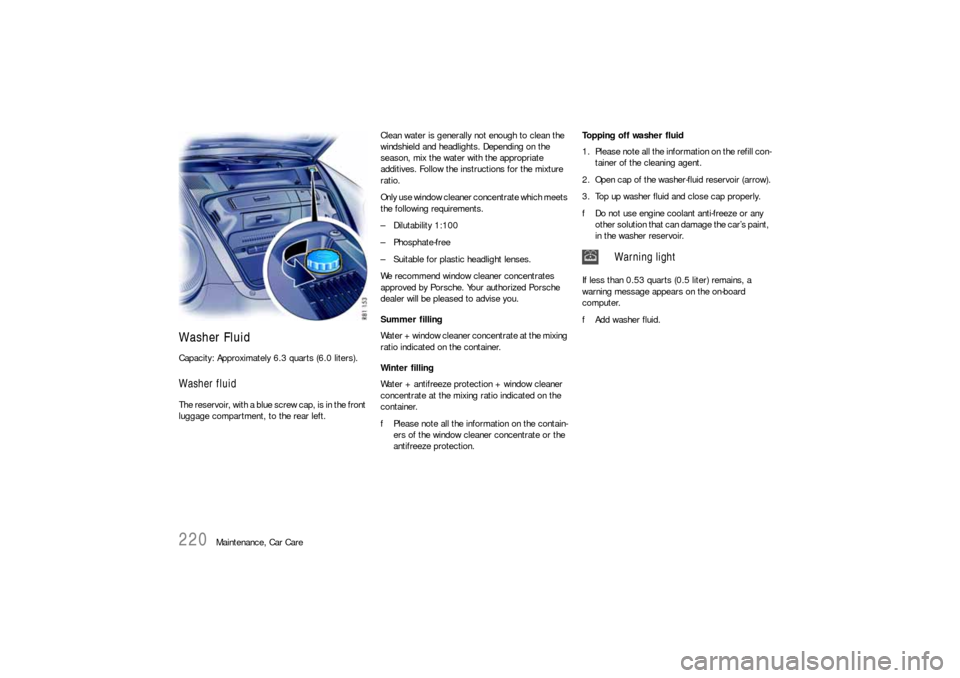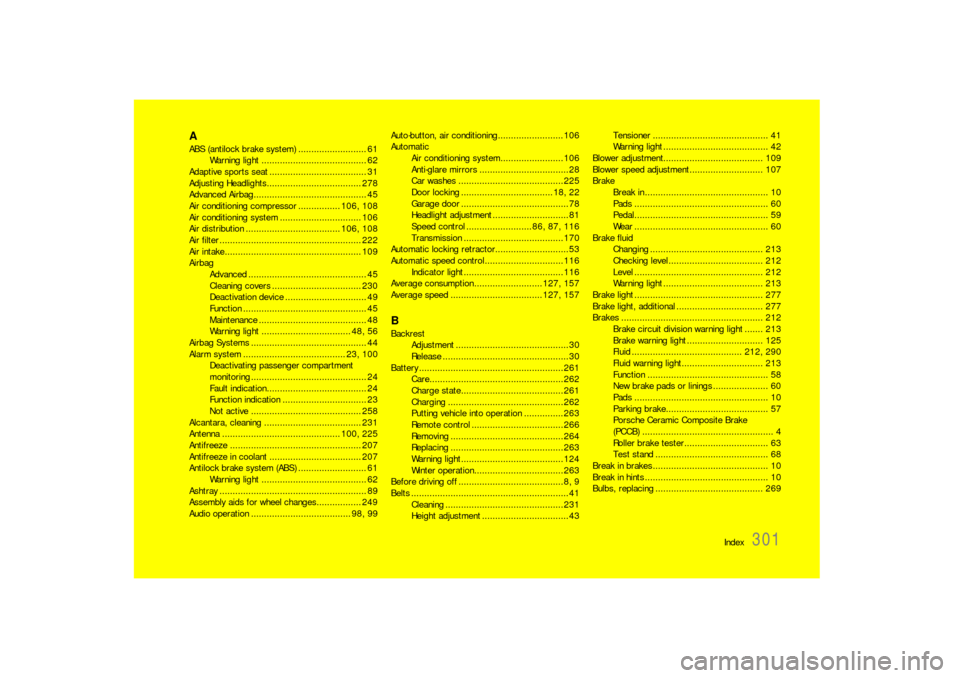warning lights PORSCHE 911 CARRERA 2010 5.G Owner's Guide
[x] Cancel search | Manufacturer: PORSCHE, Model Year: 2010, Model line: 911 CARRERA, Model: PORSCHE 911 CARRERA 2010 5.GPages: 310, PDF Size: 3.39 MB
Page 161 of 310

Warnings
159
Check left/right dipped beam (low
beam)
also applies to:
direction indicator, high beam, side in-
dicator light, reversing light, side
markerThe reported light is faulty. Check bulb.
Have the fault remedied at an authorized
Porsche dealer.
Daytime
driving lights offDaytime driving lights switch off when the en-
gine is shut off. Switch on lights if necessary.
Headlight beam
adjustment faultyHave the fault remedied at an authorized
Porsche dealer.
Front lid not closed Close luggage compartment lid properly.
Rear lid not closed Close engine compartment lid properly.
Targa flap not closed Close glass rear hatch
Rain sensor faulty Have the fault remedied at an authorized
Porsche dealer.
Steering wheel heating
ONSteering wheel heating was switched on.
Steering wheel heating
OFFSteering wheel heating was switched off.
Launch
control
active
Drive Off Assistant
failureHave the fault remedied at an authorized
Porsche dealer.
Refill washer fluid
Instrument
panelOn-board
computerText display on on-board
computerMeaning/measure
Page 170 of 310

168
Shifting Gears
Manual Transmission, ClutchThe positions of the gears are shown on the shift
diagram on the gearshift lever.
Warning!
Risk of accident, resulting in serious person-
al injury or death.
fDo not obstruct the pedal travel with floor mats
or other objects.
Nonskid floor mats of the correct size are
available at your authorized Porsche dealer.To avoid damage to the clutch and transmis-
sion:
fAlways depress the clutch pedal fully when
changing gears. Make sure that the gearshift
lever is completely engaged.
fOnly shift into reverse when the car has come
to a complete stop.
fWhen shifting gears, always ensure that the
clutch pedal is fully depressed and the gear
has fully engaged.
fSelect reverse only when vehicle is stationary.
Reverse can be engaged after pushing the
gearshift lever as far as possible to the left.
fSelect an appropriately low gear on upward
and downward slopes.
This will ensure optimum use of engine power
and engine braking.
When reverse gear is selected and the ignition is
on, the backup lights are illuminated.
Permitted engine speedfYou should change into a higher gear before
the needle reaches the red mark on the
tachometer, or ease off the accelerator.
If the red zone is reached during acceleration, fuel
feed is interrupted.
Caution!
Risk of engine damage (overrevving) when
shifting down to a lower gear.
fTake care not to exceed the maximum permitted engine speed when shifting down.
Page 215 of 310

Maintenance, Car Care
213
Changing the brake fluid Brake fluid absorbs moisture from the air over
time. This accumulation of water lowers the boil-
ing point and, under certain operating conditions,
can affect the braking performance.
Therefore have the brake fluid changed in accord-
ance with the change intervals stated in the
brochure “Maintenance”. – The warning lights on the instrument panel and
on the on-board computer indicate an insuffi-
cient brake fluid level.
– If the warning light lights up on the instrument
panel and the warning message appears on
the on-board computer in combination with a
larger pedal travel, a brake circuit may have
failed.
If the warning lights should light up when
driving:
fStop immediately in a suitable place.
fDo not continue driving.
Consult an authorized Porsche dealer.
Warning light USA
Warning light Canada
Page 217 of 310

Maintenance, Car Care
215
Fuel
Warning!
Fuel is highly flammable and harmful to
health.
fFire, open flame and smoking are prohibited
when handling fuel.
fAvoid contact with skin or clothing.
fDo not inhale fuel vapors.
To prevent damage to the emission control
system and engine:
fNever drive the tank completely out of fuel.
fAvoid high cornering speeds after the warning lights have come on.
fPlease see the chapter “FUEL ECONOMY” on
Page 214.
Please see the chapter “EMISSION CONTROL
SYSTEM” on Page 218.
Please see the chapter “LEVEL GAGE” on
Page 122.
Check engine warning light
If the warning lights in the instrument panel and on-
board computer come on and remain on while
driving, it suggests:
– a potential engine control problem and the
need for system service or
– an improperly fastened tank cap or – refueling with engine running.
Opening the filler flapThe filler opening is under the filler flap in the front
right fender.
fWith the vehicle unlocked, press on the front
part of the filler flap (arrow) to open the flap.
The filler flap is centrally locked along with the oth-
er locks. If there is a defect in the automatic unlocking
system:
fOpen the passenger door.
fPull the ring in the right-hand door aperture
(arrow).
Page 222 of 310

220
Maintenance, Car Care
Washer FluidCapacity: Approximately 6.3 quarts (6.0 liters). Washer fluidThe reservoir, with a blue screw cap, is in the front
luggage compartment, to the rear left.Clean water is generally not enough to clean the
windshield and headlights. Depending on the
season, mix the water with the appropriate
additives. Follow the instructions for the mixture
ratio.
Only use window cleaner concentrate which meets
the following requirements.
– Dilutability 1:100
– Phosphate-free
– Suitable for plastic headlight lenses.
We recommend window cleaner concentrates
approved by Porsche. Your authorized Porsche
dealer will be pleased to advise you.
Summer filling
Water + window cleaner concentrate at the mixing
ratio indicated on the container.
Winter filling
Water + antifreeze protection + window cleaner
concentrate at the mixing ratio indicated on the
container.
fPlease note all the information on the contain-
ers of the window cleaner concentrate or the
antifreeze protection.Topping off washer fluid
1. Please note all the information on the refill con-
tainer of the cleaning agent.
2. Open cap of the washer-fluid reservoir (arrow).
3. Top up washer fluid and close cap properly.
fDo not use engine coolant anti-freeze or any
other solution that can damage the car’s paint,
in the washer reservoir.
If less than 0.53 quarts (0.5 liter) remains, a
warning message appears on the on-board
computer.
fAdd washer fluid.
Warning light
Page 231 of 310

Maintenance, Car Care
229
fAlways apply a fresh coating of suitable pre-
servative to unprotected areas after cleaning
the underside of the body, the transmission,
the engine or carrying out repairs to under-
body, engine or transmission components.
Effective rust-proofing is particularly important
during the cold weather season. If your car is driv-
en frequently in areas where salt has been spread
on the roads, the whole engine compartment
should be cleaned thoroughly after the winter to
prevent salt from causing any lasting damage. A
full under-body wash should also be performed at
the same time.Stainless steel exhaust tailpipesStainless steel exhaust tailpipes can discolor due
to soiling, strong heat, and combustion residues.
The original polish can be achieved again using
commercially available metal polishing paste or
metal polish.Light alloy wheels fPlease see the chapter “WASHING” on
Page 225.
Warning!
Danger of accident resulting in serious per-
sonal injury or death if cleaning agents (e.g.
wheel cleaning agents) come into contact
with the brake discs.The resulting film on the brake discs can im-
pair braking performance.
fMake sure that no cleaning agent comes into
contact with the brake discs.
fIf cleaning agent has come into contact with
the brake discs, thoroughly clean the brake
discs with a strong jet of water.
fPaying attention to any road users behind you,
dry the brake discs by applying the brakes at
short intervals.
Metal particles (such as brass or copper in brake
dust) must not remain too long on alloy wheels.
Contact corrosion can cause pitting.
Cleaners with an oxide-removing effect or the
wrong pH value, as are commonly used for other
metals, as well as mechanical tools and products,
will damage the oxide layer and are therefore
unsuitable.
fUse only cleaners for alloy wheels
(pH value 9.5). Products with the wrong
pH value can destroy the protective layer
on the wheels.
We recommend Porsche cleaner for alloy rims.
fIf possible, wash the wheels every two weeks
with a sponge or washing brush. If the wheels
are exposed to road salt, grit or industrial dust,
weekly cleaning is necessary.
Door, roof, lid and window seals
Caution!
The lubricant coating on the inner door
seals, convertible top and hardtop seals may
be damaged by unsuitable cleaning and care
agents.
fDo not use any chemical cleaning agents or
solvents.
fDo not use any preservative agents.
fWash dirt (e.g. abrasion, dust, road salt and
grit) from all seals regularly using warm soapy
water.
fIf there is a risk of frost, protect the outer door
seals and lid seals against freezing into place
with a suitable care product.Headlights, lights, interior and exterior
plastic parts, adhesive filmsUse only clean water and a little dishwashing
detergent to clean light lenses, plastic headlight
lenses, plastic parts and surfaces.
Do not clean when dry.
Use a soft sponge or a soft, lint-free cloth. Gently
wipe the surface without applying too much
pressure.
An interior window cleaner can also be used to
clean plastic surfaces (always read the cleaning
instructions on the container). We recommend
Porsche interior window cleaner.
Page 251 of 310

Practical Tips, Emergency Service
249
Changing a wheel
Warning!
Risk of serious personal injury or death. The
car may slip off the jack.
fMake sure that no one is in the vehicle when
jacking up and changing a wheel.
fAlways place the car on stable supports if work
has to be carried out under the car.
Risk of damage to the brake discs of the
Porsche Ceramic Composite Brake (PCCB).
fAlways screw in both assembly aids when changing a wheel.
Note
The tools required for changing a wheel (e.g. jack,
wheel bolt wrench, assembly aids) are not sup-
plied with the car.
Your authorized Porsche dealer will be pleased to
advise you.1. Apply the handbrake fully and engage 1st gear
or PDK selector-lever position P and remove
the ignition key.
2. Switch on the hazard warning lights if neces-
sary.
3. Secure the car against rolling away, e.g. by
means of wedges under the wheels on the op-
posite side.
This is particularly important on slopes.
4. Slightly slacken the wheel bolts of the wheel to
be changed.
5. Lift the car only at the specified jacking points.
6. Raise the car until the wheel lifts off the
ground.
Please see the chapter “LIFTING THE VEHICLE
WITH A LIFTING PLATFORM OR GARAGE LIFT”
on Page 254.
7. Remove 1 or 2 wheel bolts (see respective
illustration).
8. Screw in assembly aids instead of the wheel
bolts.
Screw in assembly aid for vehicles without Porsche
Ceramic Composite Brake9. Remove the remaining wheel bolts.
Note on operation
fTo remove or mount the spacers:
Please see the chapter “SPACERS 911
CARRERA, 911 CARRERA S” on Page 255.
Page 265 of 310

Practical Tips, Emergency Service
263
Winter operation The capacity and ability of the battery to store
power decreases at low outside temperatures.
Moreover, the battery is more heavily loaded in
winter months, e.g. by the heated rear window,
more frequent use of additional lights, the fans
and the windshield wipers, etc.
fHave the battery checked before the start of
winter.
Maintenance note
Keep the battery well charged to prevent it
from freezing.
A discharged battery can freeze at 23 °F (--5 °C),
but a fully charged battery only freezes at -- 40 °F
(--40 °C).
A frozen battery must always be thawed before
connecting jump leads.
Replacing battery The service life of the battery is subject to normal
wear; it depends greatly on care, climatic condi-
tions, and driving conditions (distances, loads).
fOnly use an original Porsche battery, with the
correct part number, as a replacement.
fPlease observe the disposal instructions for
batteries.
Putting vehicle into operationAfter the battery is connected or after an exhaus-
tively discharged battery is charged, the multi-
functional PSM light lights up on the instrument
panel and a message appears on the on-board
computer to indicate a fault.
This fault can be remedied with a few simple
steps:
1. Start the engine.
2. With the vehicle stationary, perform a few
steering movements to the left and right and
then drive a short distance in a straight line
until the multifunctinal PSM light goes out and
the message on the on-board computer
disappears.
3. If the warnings do not disappear, then:
Drive carefully to the nearest authorized
Porsche dealer.
Have the fault remedied.
4. After the warnings disappear:
Stop the vehicle in a suitable place.
fPerform adaptation of the power windows:
Please see the chapter “STORING END
POSITION OF THE WINDOWS” on Page 26.
Page 271 of 310

Practical Tips, Emergency Service
269
Bulb chart
Ty p e , r a t i n g
Low beam Philips, D2S 35W
Additional high beam without cornering light H11, 55W
Additional high beam with cornering light H7 LL, 55 W
Turn signal indicator light, side WY5W
License plate light C5W
Lights, Replacing Bulbs
Warning!
Risk of short circuit.
fAlways switch off the relevant consumer when
changing bulbs.
Risk of serious personal injury or death.
The Bi Xenon headlights are under high
voltage when installed.
fBe careful during all work in the area of the Bi
Xenon headlights.
Risk of damage. Bulbs of a higher wattage
can damage the lamp housing.
fOnly the bulbs shown in the chart may be used.
fNew bulbs must be clean and free from oil,
grease and fingerprints. Therefore, never
touch bulbs with your bare hands.
Use a cloth or soft paper while replacing bulbs.
Page 303 of 310

Index
301
AABS (antilock brake system) .......................... 61
Warning light ........................................ 62
Adaptive sports seat..................................... 31
Adjusting Headlights.................................... 278
Advanced Airbag........................................... 45
Air conditioning compressor ................ 106, 108
Air conditioning system ............................... 106
Air distribution .................................... 106, 108
Air filter ...................................................... 222
Air intake.................................................... 109
Airbag
Advanced ............................................. 45
Cleaning covers .................................. 230
Deactivation device............................... 49
Function ............................................... 45
Maintenance ......................................... 48
Warning light .................................. 48, 56
Airbag Systems ............................................ 44
Alarm system ....................................... 23, 100
Deactivating passenger compartment
monitoring ............................................ 24
Fault indication...................................... 24
Function indication................................ 23
Not active .......................................... 258
Alcantara, cleaning ..................................... 231
Antenna ............................................. 100, 225
Antifreeze .................................................. 207
Antifreeze in coolant................................... 207
Antilock brake system (ABS) .......................... 61
Warning light ........................................ 62
Ashtray ........................................................ 89
Assembly aids for wheel changes................. 249
Audio operation ...................................... 98, 99Auto-button, air conditioning.........................106
Automatic
Air conditioning system........................106
Anti-glare mirrors ..................................28
Car washes ........................................225
Door locking ...................................18, 22
Garage door .........................................78
Headlight adjustment.............................81
Speed control .........................86, 87, 116
Transmission ......................................170
Automatic locking retractor............................53
Automatic speed control..............................116
Indicator light ......................................116
Average consumption ..........................127, 157
Average speed ...................................127, 157BBackrest
Adjustment ...........................................30
Release ................................................30
Battery .......................................................261
Care...................................................262
Charge state.......................................261
Charging ............................................262
Putting vehicle into operation ...............263
Remote control ...................................266
Removing ...........................................264
Replacing ...........................................263
Warning light.......................................124
Winter operation..................................263
Before driving off ........................................ 8, 9
Belts ............................................................41
Cleaning .............................................231
Height adjustment .................................43Tensioner ............................................ 41
Warning light ........................................ 42
Blower adjustment...................................... 109
Blower speed adjustment............................ 107
Brake
Break in ............................................... 10
Pads ................................................... 60
Pedal................................................... 59
Wear ................................................... 60
Brake fluid
Changing ........................................... 213
Checking level .................................... 212
Level ................................................. 212
Warning light ...................................... 213
Brake light ................................................. 277
Brake light, additional ................................. 277
Brakes ...................................................... 212
Brake circuit division warning light ....... 213
Brake warning light............................. 125
Fluid .......................................... 212, 290
Fluid warning light............................... 213
Function .............................................. 58
New brake pads or linings ..................... 60
Pads ................................................... 10
Parking brake....................................... 57
Porsche Ceramic Composite Brake
(PCCB) .................................................. 4
Roller brake tester................................ 63
Test stand ........................................... 68
Break in brakes ............................................ 10
Break in hints ............................................... 10
Bulbs, replacing ......................................... 269